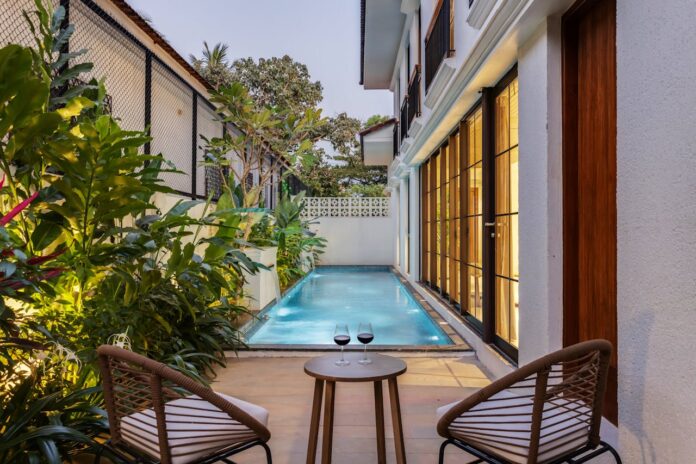If you run a small inn or B&B, long-stay deals are one of the simplest ways to stabilize occupancy and smooth weekly cash flow – yet many owners avoid them because of one four-word fear: accidental double bookings. The good news is that you don’t need an enterprise tech stack to list weekly or monthly deals confidently across multiple sites. With the proper setup in your reservation software for bed and breakfast and a few guardrails on pricing and inventory, you can promote extended stays while keeping availability synchronized everywhere guests might book you.
Before we dive in, here’s the strategic “why.” Long-stay guests reduce turnover, lighten the housekeeping load, and often spend more on-site on breakfast add-ons, packed lunches, parking, and late checkout than short-hoppers. Put simply, if you want to encourage longer stays in the hospitality industry, you need two things working together: compelling length-of-stay (LOS) pricing and a distribution setup that can publish those offers without creating gaps or overlaps in your calendar.
Step 1: Choose the Proper Sync Method (and Know its Limits)
When listing long-stay deals, most B&Bs connect their availability in one of two ways:
- iCal calendar sync. This is the “good enough” option baked into many listing sites. It’s free and easy: you import each site’s calendar URL into the others so a new booking blocks the date elsewhere. The catch is speed. Updates are not truly real-time; many platforms refresh at intervals, and during busy periods, those delays can leave a short window where two guests grab the exact dates. That’s how double bookings happen with iCal.
- API via a channel manager. A channel manager connects your bed and breakfast software (or PMS) directly to booking sites through official APIs. Availability and prices push instantly, new reservations pull back automatically, and stop-sells or minimum-stay rules flow across all channels at the same time. This is the most reliable way to prevent double bookings while selling everywhere you need to be.
If you only ever list on one site, iCal is OK. The moment you add a second primary channel or promote last-minute deals, consider stepping up to a channel manager integration for real-time updates. It’s the single most significant risk reducer in this guide.
Step 2: Build Long-Stay Offers Correctly in Your B&B Software
Your bed and breakfast software (sometimes called “software for bed and breakfast,” “innkeeping software,” or a lightweight PMS) should let you create dedicated LOS logic. Set these up first, then connect them to channels:
- Weekly and monthly pricing. Create rate plans that apply a discount starting at 7 nights and 28 nights. Travelers expect to see these offers, and some platforms highlight them in search results.
- Min/max stay rules. Enforce a 7-night minimum for weekly deals and a 28-night minimum for monthly deals, with max limits if you don’t permit ultra-long stays. Major sites support LOS restrictions and let you control booking windows, too.
- Arrival/Departure patterns. For small properties with limited housekeeping capacity, restrict arrivals to specific weekdays to batch turnovers and reduce back-to-back stress.
- Inclusions and add-ons. Offer package breakfast credits, laundry access, or workspace perks to boost attachment rates without reducing your base rate.
Once your long-stay rate plans exist in the B&B system, map them to each channel’s room type and rate identifiers so the right plan appears to the right audience. This “mapping” step is how your software tells a site, “this is the weekly plan for the Queen Room,” and it’s essential to avoid mismatches or phantom availability.
Step 3: Decide Where to List (and What Each Site is Best for)
Every marketplace has its strengths. Home-stay platforms surface weekly and monthly discounts well and attract remote workers and “slow travel” guests; hotel-centric OTAs excel at weekenders and short city breaks but still support long LOS pricing and restrictions when appropriately configured. Your channel manager (or your bed and breakfast software with channel features) should let you publish the same unit with different offers by site – e.g., “7-night discount” on a home-stay channel and “save 15% on 5+ nights” on a hotel OTA – without creating gaps.
To keep life simple, start with two to three channels that match your guest profile and bandwidth, then scale out. This is where the API connection shines: it updates your inventory and pricing on each site from a single screen. It pulls reservations back instantly, so you’re not juggling logins or copying details manually.
Step 4: Put Guardrails on Availability to Prevent Overlaps
Even with API sync, you should still add a few safety nets that make double bookings highly unlikely:
- Instant global blocks. When a long stay lands, your system should immediately block overlapping dates across the room type and related offers. That sounds obvious, but it requires proper mapping of room types and rate plans to the channels you use.
- Stop-sells on check-in days you can’t service. If housekeeping runs lean on Tuesdays, set a channel-wide stop-sell on Tuesday arrivals for stays under 5 nights. That leaves space for long-stay turnovers and reduces split-stays.
- Buffer nights for key units. If you have a consistently selling “hero” suite, consider adding a one-night buffer after extended stays to give yourself breathing room if a guest extends.
- Unified calendar view. Use the reservation calendar inside your B&B software as the single source of truth. Treat channels as storefronts; your software is the inventory ledger.
If you’re still on iCal, add another guardrail: avoid opening last-minute discounts on multiple sites simultaneously, as delayed refreshes can cause collisions. Push those promotions on a single channel or flip to API connections before you run flash sales.
Step 5: Price Long Stays to Grow Profit, not Just Occupancy
A weekly discount shouldn’t be a race to the bottom. A bright long-stay plan does three things:
- Protects contribution. Price so your weekly and monthly ADR lands above your cost to service the stay (utilities, breakfast inputs, cleaning frequency, laundry).
- Shifts demand to the soft spots. Boost discounts midweek and in shoulder seasons; keep weekends closer to public rates.
- Encourages direct relationships. Make the same base discount visible on marketplaces, but bundle the best perks—early check-in, late checkout, a local welcome treat—on your direct site to lift conversion there.
Most channel managers and B&B systems support these tactics with per-day pricing, offsets, and promotions. Use them. It’s how larger hotels merchandise without training guests to wait for coupons.
Step 6: Write Listings That Signal “We Love Long Stays”
Your copy matters. To attract extended-stay guests:
- Call out work-friendly features: strong Wi-Fi, desk or dining table, extra outlets, blackout curtains, quiet hours.
- Explain housekeeping cadence for long stays up front (e.g., weekly linen swap, trash pickup every other day).
- Mention kitchen or kitchenette access, laundry options, and parking policy.
- For monthly guests, clarify billing and receipts—a slight touch that wins business travelers and relocators.
On home-stay sites, weekly and monthly discounts display near your price; on hotel OTAs, length-of-stay offers appear when travelers choose dates that qualify. Make sure your titles and first two bullet points reflect the value extended guests care about most.
Step 7: Train for “What If” Moments That Cause Double Bookings
Technology prevents most collisions, but human processes close the gap. Add these micro-SOPs to your House Manual:
- Phone bookings policy. When taking a call-in reservation, block the dates in your software first, then complete the payment. That sequence avoids the few-minute window where a channel could still show the room.
- Extension handling. If a long-stay guest requests an extension, first check the unified calendar in your B&B software. Then, apply a stop-sell on all channels before confirming the extra nights.
- Cancellation cascades. When an extended stay is canceled, your software should immediately reopen the full date span on every site. With iCal, verify that the export/import ran; with API, confirm the push completed.
FAQ for House Business Mag Readers
Do I need a channel manager, or will iCal do?
If you’re on one site and you don’t run short-notice deals, iCal works. If you list on two or more major sites—or you promote last-minute offers—use a channel manager so updates are real-time and reservation data flows centrally. It’s safer and saves hours every week.
What features should my reservation software for bed and breakfasts include for long stays?
Look for weekly/monthly rate plans, LOS rules, rate and inventory mapping to channels, a unified calendar, two-way API connections to the sites you use, and simple tools for add-ons (parking, breakfast credits, laundry). Those are the pillars of long-stay merchandising without chaos.
How do I set weekly and monthly deals on listing sites?
Create weekly and monthly discounts in your B&B system, then map them to the matching long-stay deals on each site. Many platforms highlight 7- and 28-night discounts directly in search, which boosts visibility.
Can I cap arrivals to manage housekeeping?
Yes. Set stop-sells on specific check-in days or require minimum stays that align with your cleaning cadence. Most sites support these restrictions natively, and you can manage them centrally through your channel connection.
What if my software and a channel show different availability?
Treat your B&B system as the single source of truth. If you see a mismatch: 1) verify that the room and rate plan mappings are correct; 2) check for pending updates in the channel log; 3) for iCal setups, force a manual refresh; and 4) if needed, place a temporary stop-sell while you reconcile.
A Simple Launch Plan you Can Follow This Week
- Audit your tech. Confirm that your bed and breakfast software supports weekly and monthly rate plans, LOS rules, and either a built-in channel manager or a certified connection to one. If you’re still on iCal only, decide whether the risk profile fits your growth goals.
- Design your offers. Create a baseline weekly discount (e.g., 10–15%) and a monthly discount (e.g., 20–25%); adjust by season so you don’t give away weekends in peak months.
- Map and test. Map each long-stay plan to every channel’s room type and rate plan IDs, publish to a future test date, and verify that availability, price, and rules appear correctly on each site.
- Write for long-stay guests. Update listing copy and images to highlight work-friendly spaces, storage, laundry, and kitchen access, and clearly mention the housekeeping cadence.
- Add guardrails. Turn on stop-sells for underserved check-in days, add buffer nights on your hero units, and set alerts for last-minute bookings.
- Watch the first 10 reservations. After go-live, review each booking in your unified calendar, confirm channel mapping, and log any quirks you need to fix.
- Measure and iterate. Track occupancy, ADR, weekly/monthly attach rate, average stay length, and ancillary spend per long-stay night. Long-stay success is as much about on-site monetization as it is about the nightly rate.
The Bottom Line for Owners and Managers
You don’t have to choose between reach and risk. By setting up long-stay deals in your reservation software for bed and breakfast, mapping them cleanly to each channel, and syncing availability through real-time API connections rather than slow calendar imports, you can promote weekly and monthly stays everywhere your guests shop—without the dread of double bookings. Add a few operational guardrails (smart stop-sells, buffer nights, unified calendars) and long-stay offers become a reliable lever to grow occupancy, reduce churn in your housekeeping schedule, and increase guest lifetime value through calmer, more personalized stays.
When you line up the pieces—pricing, messaging, distribution, and process—you not only protect your calendar, you also make your property easier to run and more appealing to the very guests who bring stability to small lodging businesses. That’s the heart of innovative House Business: less firefighting, more predictable revenue, and a guest experience that improves as your systems do.
Find a Home-Based Business to Start-Up >>> Hundreds of Business Listings.














































